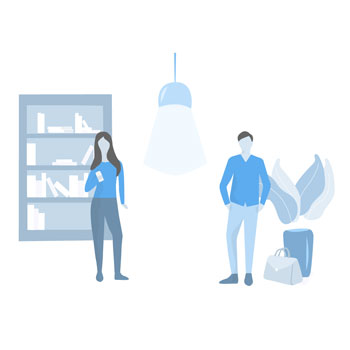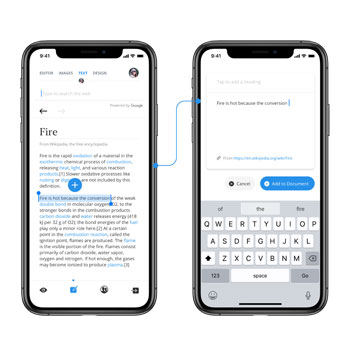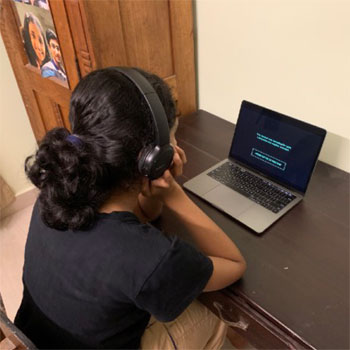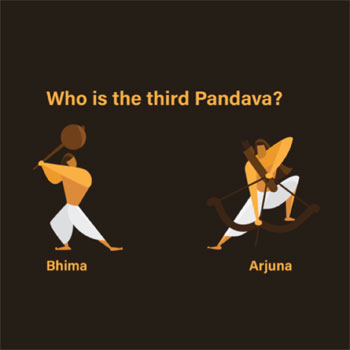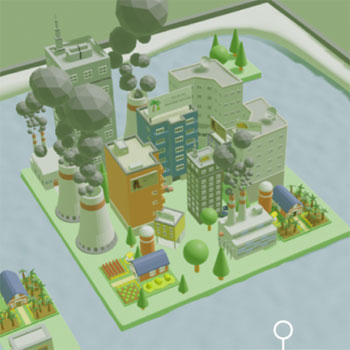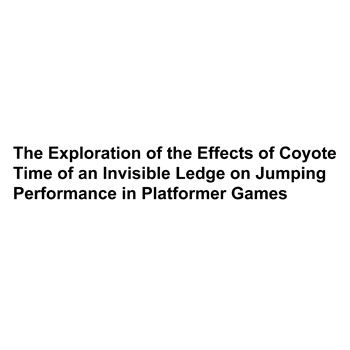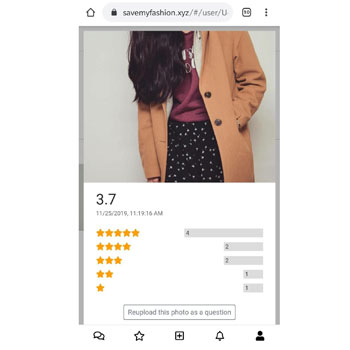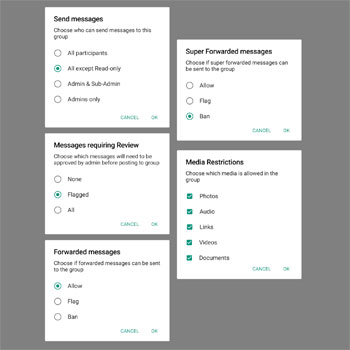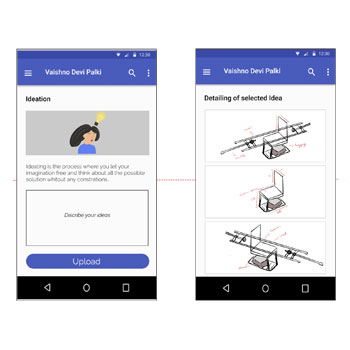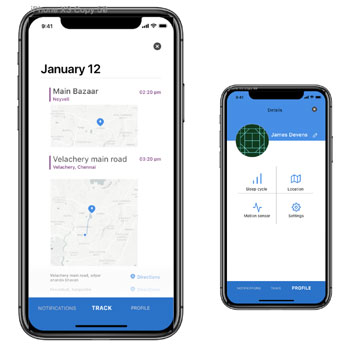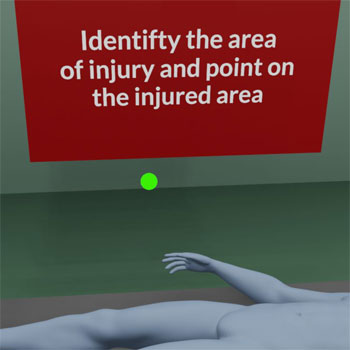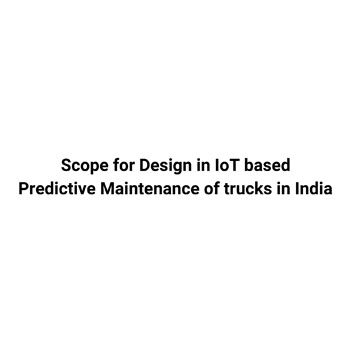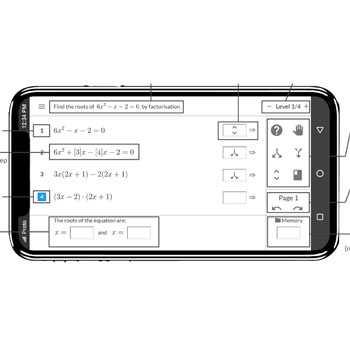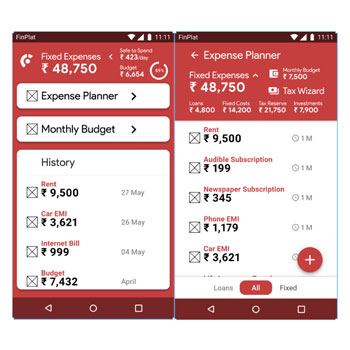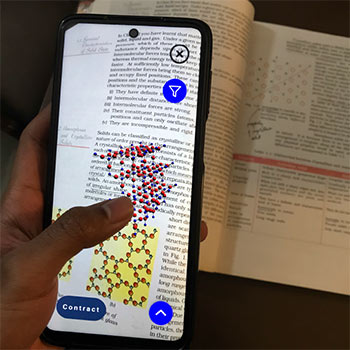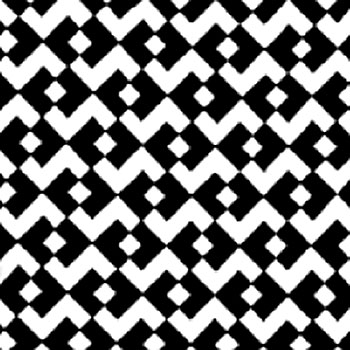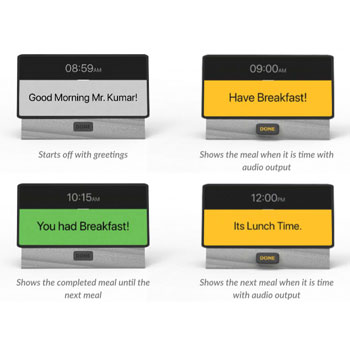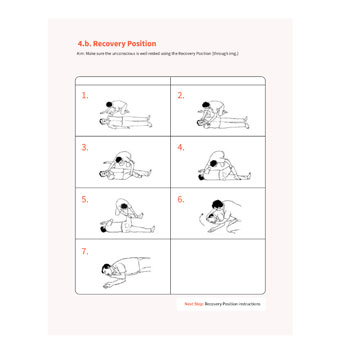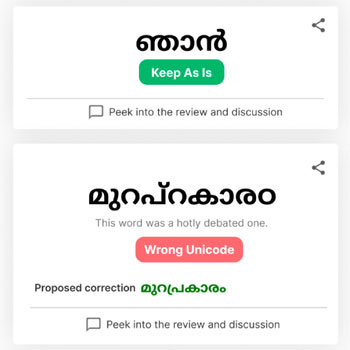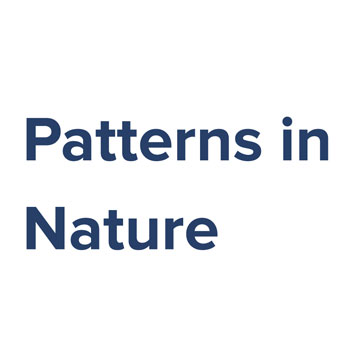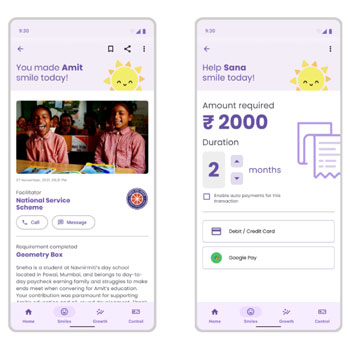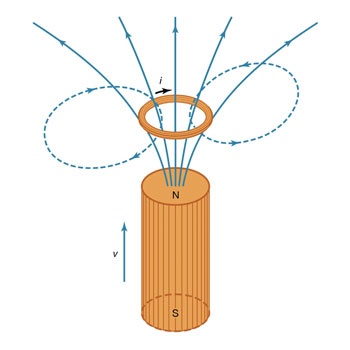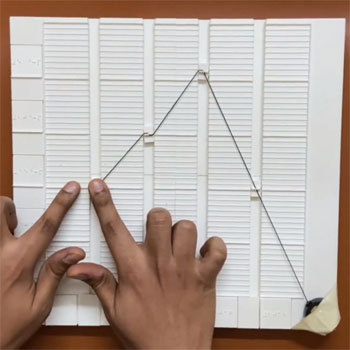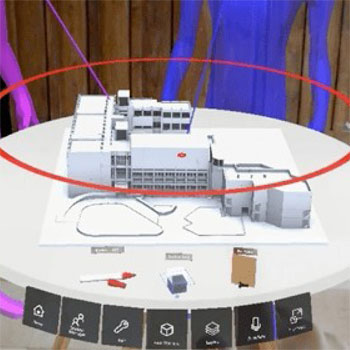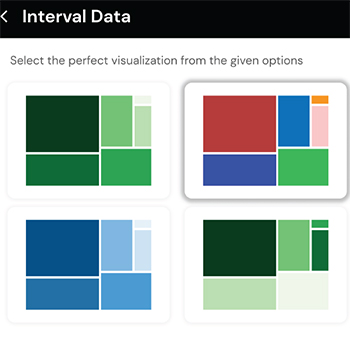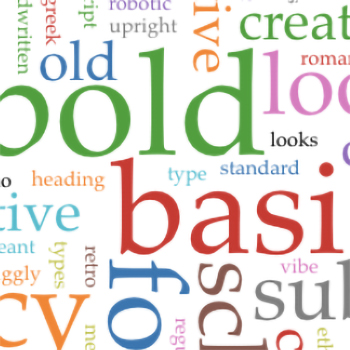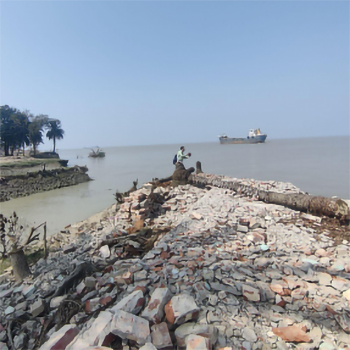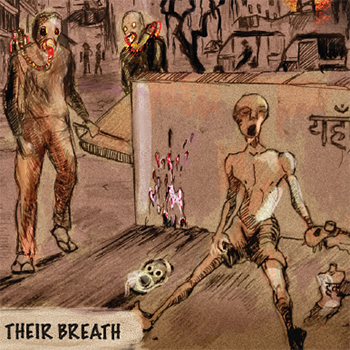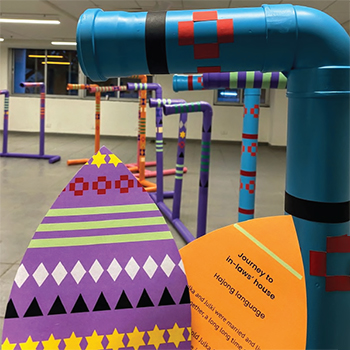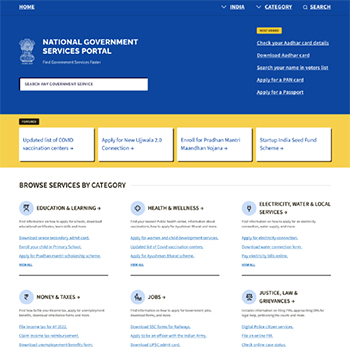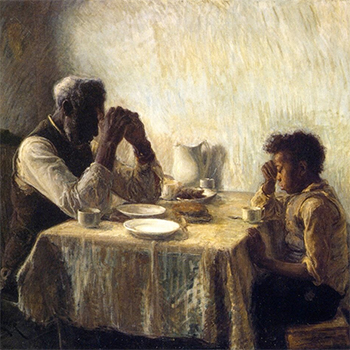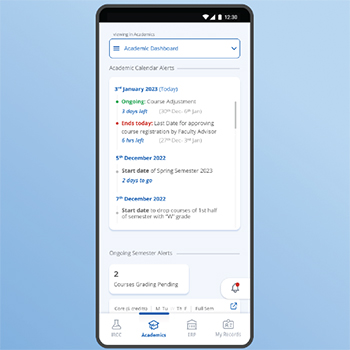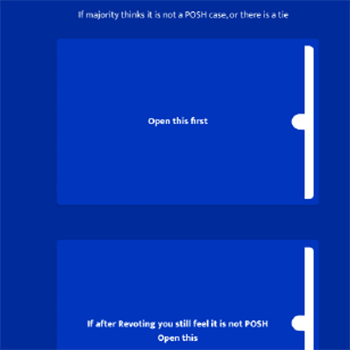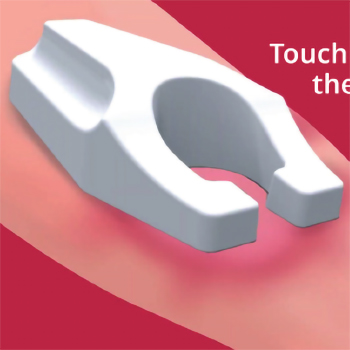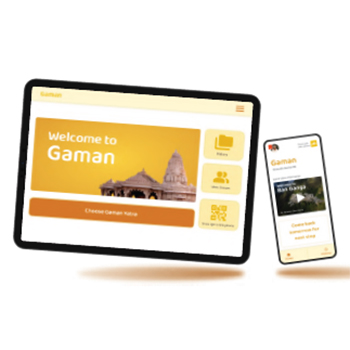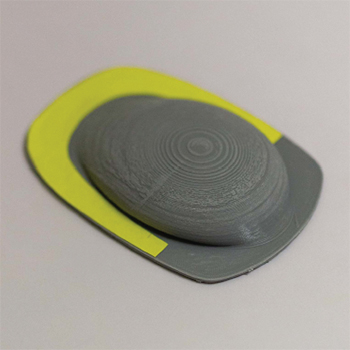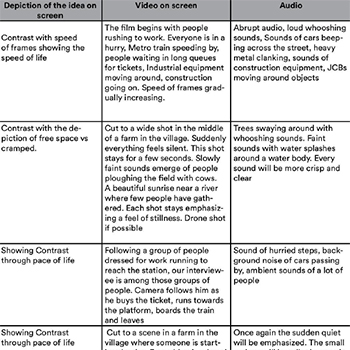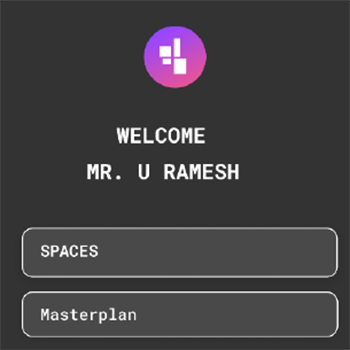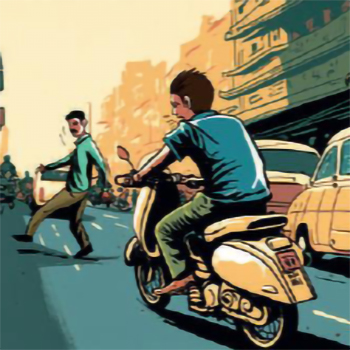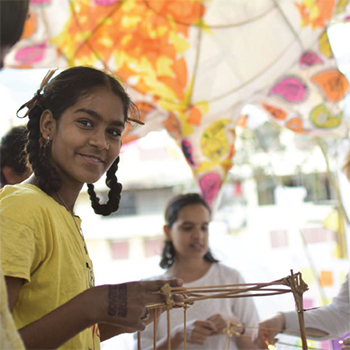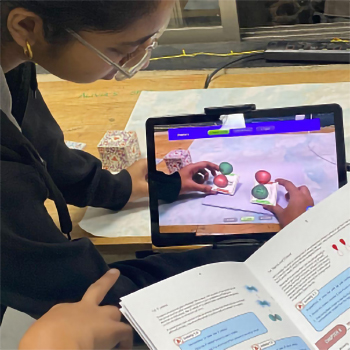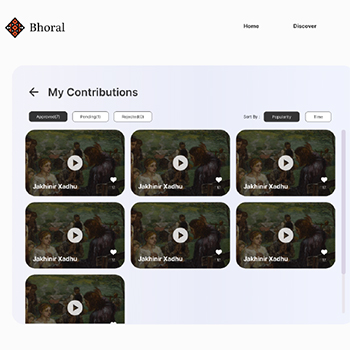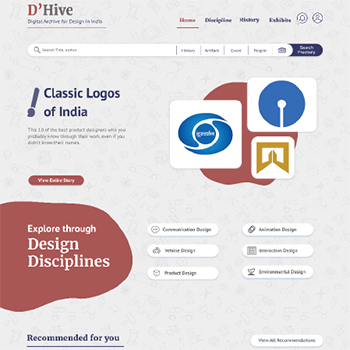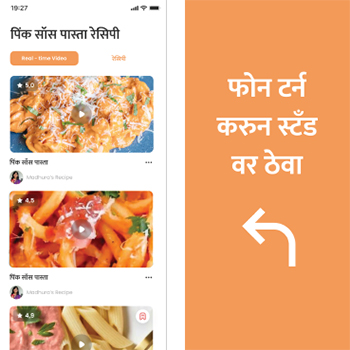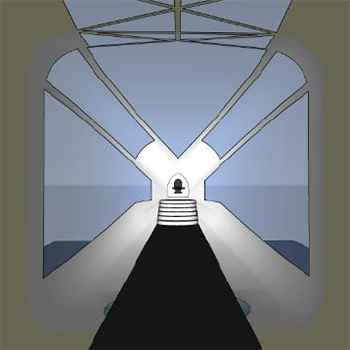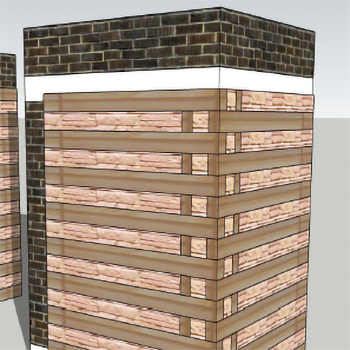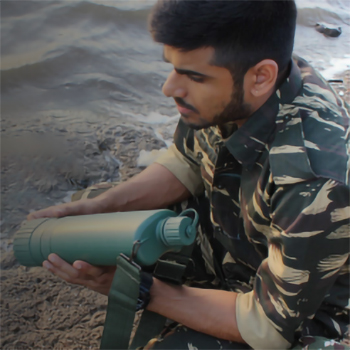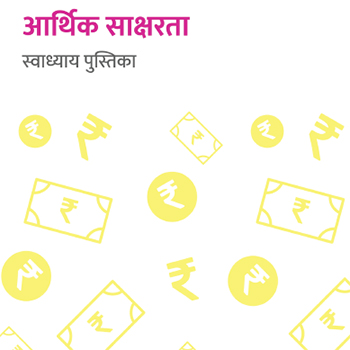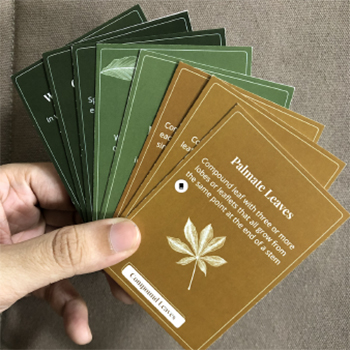Interaction Design 2019-onwards
Batch 2016-2020
(25 items)
Batch 2017-2021
(3 items)
Batch 2018-2022
(14 items)
Batch 2015-2019
(1 items)
Batch
(2 items)
Batch 2021-2023
(47 items)
Interaction Design 2019-onwards
2016-2020
(25 items)
Accessibility solution for wheelchair users for the bus transit system in Israel
by Tarun Mugunthan
by Tarun Mugunthan
The project was done as part of a course I did at Holon Institute of Technology(HIT, Israel). It was a group project where my role was to design the solution which would be followed up with prototyping/deployment by the rest of my team mates who were engineering students. The duration of the project was 2 months with weekly progress meetings in between. The brief given to us was broad; to give a proposition to improve quality of life of citizens of Tel Aviv in a defined context and provide a completely detailed out solution with a prototype. We had freedom to choose any context we wished to work with. Through brainstorming, we came up with several ideas out of which we picked the idea of improving wheelchair user experience and accessibility of the public bus transit system in Israel.
Details >>Understanding Virtual reality
by Arnesh Mandal
by Arnesh Mandal
This research project is about understanding how to design for virtual reality and hence understand virtual reality. This project is exploratory in nature. VR is not a new medium, but its popularity and accessibility are new. Like all new media, we have a new set of constraints and concepts to deal with if we were designing for the mentioned media. Virtual reality is a simulated experience that could be a new reality or modifying the reality we know. By taking over our senses and providing stimuli, we create a new environment that only exists in our minds yet feels real. Virtual reality has existed for a while now and has been being developed over a long time. The use of VR has been prevalent in flight simulation and other industries. However, due to recent improvements, the head-mounted displays can be mass-produced at a relatively cheaper price point. This opened a whole era for virtual reality as it entered the entertainment market.
Details >>Visualizing Desertification
by Arun Jayaramakrishnan
by Arun Jayaramakrishnan
To understand and compare different aspects of climate change using visualization. To study climate change factors in Tamil Nadu and to focus on existing research/work and do an interactive visualisation.
Details >>Information app for Temples
by Arun Jayaramakrishnan
by Arun Jayaramakrishnan
Temples are an integral part of Hindu culture and form the backbone of most of its cultural activity. Each and every temple is unique in a variety of aspects, from deity, landscape, festival, and architecture, and they change as we go from Kashmir to Kanyakumari. Each with marvellous architecture gives breath-taking moments every time we visit one of the oldest temples, satisfying the hearts of countless devotees from the remotest part of India. Also, every temple has some unique way to pray to the deity and is special with their own sweet histories. Here in our country, which has given birth to countless faiths, is a wonderful treasure of knowledge of sculpture, art, and spirituality, but today we face a unique challenge to overcome. As we seek to improve our lives, we move out of homes, villages, and towns and flock towards cities for higher education and employment. As whole society tends to move in that direction, we observe that we slowly forget our roots. And in the new place we reside, we don’t know enough fully about the temples there. Even as temples themselves use digital technologies to solve the information problem, there still exists a gap. As a frequent visitor myself, I have experienced some beautiful history and events that happened in famous places from their web platforms. And many such small aspects are living in the hearts and minds of the devotees. As people move out of their place, the next tend to forget the stories and specialties of their own temples. In an attempt to solve this issue, I have explored my ways to document this data in digital form.
Details >>Vertical: Exploring Collaborative Co-located Content Creation on Mobile Devices
by Naveen Shaji
by Naveen Shaji
One person often writes on a digital medium using a single device. However, most writing involves sub-processes within that feed into the document. For example, research that takes place while writing an academic report or a blog post influences the writing process quite a bit. Likewise, adding rich media to documents and formatting text are all added to the core writing experience, which gives rise to the modern content creation workflow. Vertical is a co-located mobile content creation platform that explores the interactions between people while they create collaboratively in different co-located settings. It works by separating the more complex aspects of creating a document into multiple devices, which can then be used by different people working together, effectively disaggregating the components of the modern content creation workflow. The project aims to be an exploratory probe into the kind of interactions that occur while disaggregating the complex task of creation.
Details >>Vertical: A smarter way to write together
by Naveen Shaji
by Naveen Shaji
The Better Together Toolkit is a suite of resources designed to help separate complex applications and services between multiple devices to empower emergent users. The project is based in the FIT Lab at Swansea University, UK, with partners at IIT Bombay, Mumbai, India. Quite a bit of research has been done in the areas of co-located interactions and multi-device collaboration. People working together to write a single document is a common occurrence, both in the business and the research worlds. While reliable estimates are unavailable for business memos, in the sciences the proportion of jointly authored articles has been increasing steadily throughout the century, so that in some fields over 65% of articles are jointly written.
Details >>Artificial Intelligence Powered Enterprise Hiring Platform
by Naveen Shaji
by Naveen Shaji
Hiring is one of the most crucial functions of any organisation, and hiring the right talent can be the difference between a successful company and a failed venture. As the world moves towards a virtual approach to working, it’s only natural that more and more companies hire through online interviews. Services like LinkedIn offer one-click applications to job roles using your online LinkedIn profile. This, while making it easier for candidates to apply for roles, also puts stress on the human resources team that’s screening applicants. There has been a rise in automated software that analyses candidate resumes and shortlists a smaller, more manageable number of candidates. Only these shortlisted candidates are then allowed to proceed to the next step in the hiring process. More often than not, this process overlooks a lot of applicants who may be a great fit for the team, but were eliminated in favour of applicants who look better on paper due to resource costs associated with interviewing a large number of people.
Details >>Effects of audio feedback types on waiting time while rebooting a system
by Nebin Biju
by Nebin Biju
Waiting time plays an important role in the user experience of a system. Research has shown that the right amount of wait time has a massive impact on the overall success of a product. Providing users with the right feedback during wait time is hence important. This study examines the effects of audio feedback types on users perceptions of waiting time while rebooting a personal computer. Three types of audio feedback—slow beep sound, fast beep sound, and running water sound—were used with 2s, 7s, 15s, and 20s to evaluate the impact of users perception of waiting time, degree of worth waiting for, and degree of pleasure. Results showed that the users’ time perceptions and wait evaluations were affected by the feedback types and were consistent with the attention-gate model theory proposed by Zakay and Block. The perceived error time also varied with feedback type and wait time. Design recommendations were made from the study in regards to designing audio feedback types while designing for wait times.
Details >>NTU Museum App
by Nebin Biju
by Nebin Biju
NTU Museum promotes a keen awareness and strong interest in art and heritage on the Nanyang Technological University Singapore campus. Opened in 2008, the museum has a modest contemporary and Southeast Asian art collection and exhibits mostly in public spaces on campus to maximise the outreach. These artworks, installations, and sculptures together form the NTU Campus Art Trial.
Details >>Design Intervention for Indian Elderly to improve Hand Flexibility and Range of Motio
by Nebin Biju
by Nebin Biju
Body metabolism slows with age. This in turn reduces the activities that the elderly can do. It is found that people doing physical activities tend to improve their immune system, digestive system, bone density, blood pressure, reduced heart attacks, and it even helps in reducing depression and anxiety in the elderly. These illnesses, hence, can be reduced significantly with simple exercises, proper therapy, and rehabilitation. Stroke patients and fractured individuals constitute another significant group that require physiotherapy and rehabilitation. Rehabilitation programmes are time-demanding and often require regular practice. When western countries are slowly advancing in their improved healthcare system and tele-rehabilitation programmes, with the constant increase in elderly pulation, the majority o of the Asian countries, especially the ones in the Indian subcontinent, are yet to tackle the issue effectively. The existing facilities of therapy and rehabilitation are not accessible to a significant part of the community due to the poor health care system and affordability. Absence of proper rehabilitation facilities after hospital care is also a major reason for patients to discontinue the course of the programme.
Details >>Teaching the effects of climate change/global warming to middle school students through an Interactive media
by Nimir Singh Kuntia
by Nimir Singh Kuntia
Climate change is a very relevant problem that we all are facing globally, and in my opinion, the only way we can tackle it is by educating the children better so that they can be more motivated to act and not repeat the same mistakes that their predecessors made. As my final year B.Des project, I want to use all the knowledge and skills I have learned to make a very socially relevant project using technology, which can create experiences that excite, engage, and most importantly, educate others. Goal: I want to teach the children of middle school the effects of climate change and why it is such a big issue in a way that they can better visualise and empathise towards it by the use of modern technology.
Details >>The Exploration of the Effects of Coyote Time of an Invisible Ledge on Jumping Performance in Platformer Games
by Rishabh Jain
by Rishabh Jain
Jumping is a game mechanic with a prominent importance. It has a rich historical background, existing since the beginning of games. Many previous research papers have defined and classified such important mechanics into various categories. Other researchers have tried to understand the satisfaction that a jump brings to a video game. However, there has not been research where the correlation of jumping performance and “coyote time"—an e extra time where a character can make action after actually not standing on a platform—or an invisible ledge (to achieve the same result) have been linked. We design our experiment into two parts: an experiment to carry out the testing of participants performance and the correlation of coyote time with it, and an additional questionnaire after to ask feelings associated with the gaming experience. With such design, we aim to somewhat state or explore the relationship of coyote time and invisible ledges on jumping performance and set a future reference to how such factors can help with the immersion or a feeling of a video game.
Details >>Fashion Advice Crowdsourcing Platform
by Rishabh Jain
by Rishabh Jain
People have trouble finding personalised fashion advice due to differences in personal taste, not knowing who to ask, and shyness. Our solution is to create a fashion advice platform for people to get personalised fashion advice. The application is different compared to other similar solutions for two reasons, one is separating rating from advising, and another is its adoption of the rating system from dating apps to a fashion advice community. Commonly, people struggle to get good fashion advice in their everyday lives. They are not sure who to ask, and personal shoppers are expensive. By creating a platform where good crowdsourced personalised fashion advice is easily accessible, we hope to help people gain more confidence through their dressing styles. According to 11 out of 13 survey participants, shopping is a collaborative event. They all shop with companions (family and friends), and most ask those companions for opinions and help to find an outfit. This highlights the feasibility of using crowdsourcing for such subjective and opinion-based advice.
Details >>Whatsapp Group Moderation Featureset
by Rishabh Jain
by Rishabh Jain
This journey started with different ideas than the ones presented here. I picked the domain of fake news and wished to address it with a game at the start of the semester. It was only after diving deep into it that I realised that I was way out of my depth there. I got lost in its philosophical foundations that dealt with things like truthiness, epistemic responsibility, and post-truth. If this was the only place I got lost in, that might have been fine, but my vision kept getting murkier with added layers of complexity. There are systemic reasons for platforms prioritising engagement over signals of truth. Finding the truth is hard for the machines and both hard and expensive for humans. Teaching people how to find the truth online is an added challenge. Media literacy techniques optimised for the web are few, far between, and limited in their results. In addition, this domain is directly affected by the flaws in human reasoning, like biases and motivated reasoning. As a design student, I found it impossible to define a design brief and find a direction. It did not help that I kept questioning my own assumptions rather than acknowledging them and building on them. After a series of failed attempts at connected but distinct approaches, I have finally fixed on the following brief. It is a necessary but insufficient precondition to a fake news intervention. Over the span of these past months, I have reached the conclusion that fake news may not be a design problem at present. I aim to articulate and write a piece of literature arguing the same, but it was deemed out of scope for this particular project.
Details >>Introduction of design and design thinking to highschool students, using new media technology
by Shuvam Bharti
by Shuvam Bharti
In the current globalised world, there is hardly any boundary between goods and products that everyone is consuming. To meet the global standards, all the designed products and services ignore its effects on different cultures and people. Often, this unthoughtful consumption and introduction of such products leave a long-lasting environmental and cultural dent. Understanding how things are made and the thought process behind them can probably give a better understanding among people about products and their effects. Design education creates this opportunity to become more sensitive towards this consumption. The design process includes knowledge-gathering, analysis, discovery, and conceptualization resulting in a problem-solving activity, which in turn leads to experiential learning. In this digital world of learning, high school can hardly find proper design learning material or platform at an early age as it asks for extra efforts and does not actively complement other subjects. The introduction of the design process among students also aims to bring out those curious minds who might ask questions about their new and old existing beliefs, trends, and create their own meaning out of it.
Details >>Dementia Care
by Subhalakshmi Govindaraj
by Subhalakshmi Govindaraj
This report describes the research method tailored for people who take care of people with dementia. It also talks about how globalisation has affected our health care system and how everyone can get affected by it. This project includes research insights from interviews with various caretakers from the Alzheimer’s Society, UK, from both Swansea and London, and focuses on trying to achieve an effective way to help people support the initial stages of dementia without interfering with the patient’s everyday routine. Overpopulation is common in the 21st century, and while there are increasing digital-driven health care solutions and cures, there is also no increase in new diseases being identified. Dementia is rather common these days among older people, though there is currently no cure for dementia as such. Researchers have aimed to find cures for dementia-causing diseases like Alzheimer’s disease and vascular dementia. It is a syndrome during which there's deterioration of memory, thinking, behaviour, and therefore the ability to perform everyday activities.
Details >>Wandering Technology for Dementia Care
by Subhalakshmi Govindaraj
by Subhalakshmi Govindaraj
This report describes the research method tailored for people who take care of people with dementia. It also talks about how globalisation has affected our health care system and how everyone can get affected by it. This project includes research insights from interviews with various caretakers from the Alzheimer’s Society, UK, from both Swansea and London, and focuses on trying to achieve an effective way to help people support the initial stages of dementia without interfering with the patient’s everyday routine. Overpopulation is common in the 21st century, and while there are increasing digital-driven health care solutions and cures, there is also no increase in new diseases being identified. Dementia is rather common these days among older people, though there is currently no cure for dementia as such. Researchers have aimed to find cures for dementia-causing diseases like Alzheimer’s disease and vascular dementia. It is a syndrome during which there's deterioration of memory, thinking, behaviour, and therefore the ability to perform everyday activities.
Details >>Virtual Reality Mobile Application for First-Aid training
by Thadhagath MP
by Thadhagath MP
The shift in the education system towards a more holistic development of human beings is driven by the technological and cultural advancement of society. Empathy and caring for a fellow human being is being adapted and given more value than ever. Helping another being who is in an emergency situation can be a double sword if the person trying to help is not educated previously on how to handle the situation. This project aims at creating awareness and educating simple and basic First Aid knowledge to anyone who is interested in learning.
Details >>Scope for Design in IoT based Predictive Maintenance of trucks in India
by Varun Vikash Karthikeyan
by Varun Vikash Karthikeyan
Traditionally, maintenance of machinery is performed by either the preventive maintenance model or the corrective maintenance model. With preventive maintenance, the equipment is replaced before it fails based either on limits recommended by the manufacturer or based on signs of physical wear. This approach can prove beneficial for critical equipment, the failure of which can lead to other major failures or simply huge downtimes. However, not all equipment of the same type follows a similar wear pattern. Oftentimes, there is always a portion of the life of the equipment that still remains when the equipment is replaced, leading to an increase in maintenance costs. In contrast to preventive maintenance, corrective maintenance is carried out only when a piece of equipment completely fails, thereby making full use of its life span. This approach might be suited for non-critical equipment that might not directly impact the ability of the machinery to function. However, having equipment that is not in its best health can lead to higher running costs due to reduced efficiency and might take a toll on the lifespan of the machinery.
Details >>Faze: Tab switching & Window switching with Gaze & Facial gestures
by Varun Vikash Karthikeyan
by Varun Vikash Karthikeyan
In an attempt to explore the domain of using the face as a modality for desktop control, in this project, we use gaze input and facial gestures (tilt head, raise eyebrows, lean backwards) for two common desktop control operations: tab switching (within application) and window switching (between application). A working prototype was built using an eye tracker to collect gaze input and a face detection library to detect facial gestures, both connected to a custom-built dummy desktop, and some initial response was taken by showing it to a few people.
Details >>Interface Design for Condition Monitoring and Predictive Maintenance in Trucks
by Varun Vikash Karthikeyan
by Varun Vikash Karthikeyan
The aim of this project is to design the interface for a smartphone-based health and usage monitoring system (HUMS) system for predictive maintenance of trucks. The project aims at supporting users who own small-scale fleets (less than five trucks). Due to the large number of these small businesses, designing for this sector will enable supporting the digitalization of a sector that is not generally considered the main focus of digital India campaigns. However, this sector plays an important part in the economy, and digitalization will help in getting maintenance done at the right time. Thereby, improving the efficiency of the trucks reduces the cost of maintenance for owners and, as a consequence, reduces overall pollution in the long run. In order to design for this population, a user study was conducted with truck owners, drivers, repairmen, and spare parts dealers to understand the trucking ecology in Salem, Tamil Nadu. Based on insights from user studies, various concepts for the interface for a Minimum Viable Product were explored, which were then translated into two prototypes. Due to the situation of the lockdown, actual user testing was not possible. Hence, these prototypes were tested with student peers, and a final version was detailed.
Details >>Designing an Algebra Training Tool for Secondary School Students
by Vineet Srivastava
by Vineet Srivastava
The COVID-19 pandemic of 2020 and the policies of social distancing and lockdowns that followed it led to an unprecedented shutdown of public activity across the world. Students and educational institutions were placed under sudden stress, with the World Bank estimating that at least 1.5 billion students and 63 million educators faced a sudden disruption in their academic practices. The general response of educational institutions was to expand their digital infrastructure to enable online or e-learning, but this capacity varies greatly between institutions, owing to differences in access to resources and infrastructure. In this project, I study the impacts of the switch to e-learning on secondary school students studying mathematics. I chose to target the problem of assessment as a means of improving overall learning outcomes in the e-learning environment. While blending learning, practice, and assessment is not a new idea in e-learning, existing tools of this kind offer limited modes of interaction, most often just a number as a final answer to type into an input box.
Details >>Design of a Financial Planning Platform for Young Working Professional
by Vineet Srivastava
by Vineet Srivastava
Good financial management skills are quickly becoming an essential skill for a growing number of people in an increasingly financialized world. Understanding how to manage one’s income, assets, and liabilities is an essential skill to acquire if one is to make the best use of the resources they acquire over the course of their working life. In a world where capital consistently grows faster than wages and real production, driving up the cost of living for everyone, the time when financial management was reserved for the rich is past. A growing number of tools and companies have cropped up to satisfy this market need, but most fail on some account, whether due to a limited breadth of capabilities, access restrictions to economically weaker individuals, or vested interests that may not necessarily align with those of their users. Besides that, there is also an absence of a single tool to unify several basic aspects of financial planning, such as tracking, spending, loans, credit cards, bank accounts, and an investment portfolio. In this project, I propose a platform that can manage the financial planning requirements of young working professionals in income brackets ranging from low to moderately high. The platform allows the planning of income allocation between expenses, savings, and investments while also allowing the user to view long-term trends of their financial habits to allow for better decision-making.
Details >>Bill Splitting App
by Vishnu Priyan
by Vishnu Priyan
Going out for dinner is a fun and fondly remembered experience, with your loved ones or with your buddies. It’s all fun and games up until the check shows up, bringing stress and math problems with it. This process has barely changed in a very long time. We have dinner, get the bill, and depending on the dynamics of the table, the bill either gets paid by one person, split into equal portions, or split according to what you had to eat, with the complexity of the math involved increasing in the same sequence. This specific problem deserves a higher level of attention and a solution that solves it satisfactorily due to the amount of time which the guest/waiter has to spend splitting the bill, which could add up to a large amount of time for the restaurant where the tables are occupied when someone else could have been served.
Details >>Gamification of Crowdsourced Corpus Cleaning
by Vishnu Priyan
by Vishnu Priyan
Swarachakra Tamil is a touchscreen keyboard for the Android Smartphone Operating System. Swarachakra maintains a list of all words typed using the keyboard by the users. This is a steadily growing database of conversational, daily-use words that potentially can be used for research and other purposes, like chatbot design, predictive text, autocorrect, etc. But at the moment, this is raw data without any metadata and has errors in it. The errors include, but are not limited to, spelling mistakes, non-existent words, and words from other languages. These errors in the database need to be identified, tagged, and rectified (Correction/Removal), which will be referred to as cleaning henceforth. This database is to be cleaned before it can be used for any other purposes.
Details >>2017-2021
(3 items)
Augmented Reality In Education
by Aaditya Aji
by Aaditya Aji
Formal education acts as stepping stones for creating a learning environment for students throughout the high school and college journey. During the COVID pandemic, the schools had to be closed down and students were stuck at home with their classes happening virtually through online video conferencing tools and virtual classrooms which naturally affected the learning environment for the students. In conventional classroom environment, the day would consist of several subjects as periods along with extra curricular activities(ECAs) to create a balance, along with competitions, events, workshops, practical laboratory classes etc. which created a good learning environment for students. With the sudden change in the formal education sector, students could not adapt to the new ways of instructional learning which severely affected the performance of the students. The learning environment that the traditional system created was missing from the virtual classroom approach. It was also interesting to note that the education sector was several hit because there wasn’t any significant change that had happened in the sector until recently with several online education platforms coming up in the form of open-source courseware or startups which tutor students. I thought it’d be interesting to explore the possibilities of new tech in the sector the way it has affected other growing sectors such as finance, health, etc. In my project, I’m using AR to aid students in 3D visualisations of concepts explained in class 12th NCERT textbook which could help them understand the concepts better along with other supportive material which will help them develop curiosity and interest in the topics while maintaining a seamless self-learning experience under the pandemic conditions which was earlier fulfilled by the formal education system through various activities and social learning environment in schools. The AR mobile app can be used to scan images in the NCERT textbook which opens a 3D visualisation that the students can interact with, and explore to understand the spatial features, which further allows them to question and gain interest in the area, nudging them to read and know more about the topic. The app also provides additional learning material from Wikipedia, which can be used to read up about the relevant related topics and relevant instructional videos which can help a student understand concepts through instructional means which was missing due to problems faced in the virtual classroom environment, earlier students would interact with teachers and students in classrooms when they faced issues or doubts. This blended learning approach has proven to be more engaging for students and hence this opportunity could be used to develop a framework that can be used to create or curate more educational content. Exploring that possibility and suggesting a solution in the direction was my primary motive of the project.
Details >>Automation in polyhouse
by Pranav Pagar
by Pranav Pagar
Polyhouse is a structure made of translucent material like polyethene, where the plants grow under well-controlled climatic and ideal conditions. Polyhouse is mainly used where the environment for some plants is not ideal. The size of the structure can differ from small house to big-size buildings as per the need. The high-end polyhouses have installed advanced technology like heating and cooling systems, lighting, monitoring screens, and computerized system which provide the ideal conditions for plants. People tending towards polyhouse cultivation is due to more profits and the possibility to grow crops throughout the year without depending on environmental factors.
Details >>Form, Transition and Abstraction
by Jake V. Abraham
by Jake V. Abraham
The purpose of this project is to create an easy-to-grasp video lecture on the topic “Form, Transition, and Abstraction.” The initial intention was to cover a much bigger portion of form, a principle of two-dimensional design. But, to cover the vast knowledge about form requires a considerably longer time and resource than what is available for the project scope. So, the basics of three topics were selected from the available material and condensed into an easy-to-understand material and presented. The lecture explains the basics of form, transition, and abstraction through suitable examples. To test the understanding of the student, easy-to-complete exercises are also provided to
Details >>2018-2022
(14 items)
Assistive Aid for the Elderly with Early Dementia
by Anagha Aneesh
by Anagha Aneesh
Memory loss is unusual forgetfulness, which is a persistent failure to remember. It results from changes in the brain and can be a normal part of ageing or a symptom of another medical condition or damage. It often goes undiagnosed mainly because people think their memory loss is not a big deal and sometimes because they do not want to be diagnosed as a patient with memory impairment. People with dementia were found to be less cooperative and to exhibit varying levels of confidence, leading to discord in the household. People with dementia face difficulties completing daily tasks and are often left being confused about whether a task is already done or not. They need constant attention from their carers to keep track of their activities, as repetition or skipping a particular activity, for example, taking medicine for blood pressure, may cause a major imbalance in their bodies with adverse effects. In such a case, an assistive aid that could make them more self-reliant, hence taking some of the responsibility off the carer’s shoulders, might make a huge difference in a dementia-caring household. This project aims at developing assistive aids for people falling under the first three stages of dementia to help them get through their daily routine while reducing their level of dependence on their caregivers. This report covers the secondary research on existing alternatives and past projects and primary research conducted on 15 subjects, the results of the research, and a suggested solution.
Details >>Web Experience to enable more Periodic Blood Donations in India to tackle the current shortage of blood
by Anagha Aneesh
by Anagha Aneesh
India is currently experiencing a blood scarcity due to a lack of voluntary donors and a reduction in the frequency of regular donors, who are concerned about the safety of visiting a facility and donating blood following the pandemic. A significant portion of the adult population is unaware of the need and seriousness of the problem and frequently succumbs to misunderstandings, resulting in no donation. By studying the common trends and demographics of periodic donors, as well as the level of awareness that people have in this sector, this project aims to better understand how to address the country's high demand for blood and low supply, as well as identify motivations that could help the situation. The primary objective of the study would be to devise how to bring in more first-time donors and encourage repeated donations to tackle the current shortage of blood in the country. Two types of studies, both qualitative and quantitative, were conducted. The findings from the study were mapped out and overlapped with the findings from existing literature to derive major conclusions. Based on these conclusions, the final output was created, which is a webspace that unifies existing platforms to provide a transparent experience for all user groups while making the general public aware of the necessity and benefits, clearing misconceptions, motivating and guiding the donors, and finally allowing the donation facilities to provide better outreach and experience to the donors. Evaluation criteria were also devised and planned for the future.
Details >>Designing plastic lamp shades- Material design and exploration
by Avinash Manikandan
by Avinash Manikandan
Through the course of my college education, I have gotten disconnected from fiddling with forms and products. The design exploration project seemed like the perfect opportunity to revisit and satisfy my interest in this field. Amongst all the available options for material design, designing lamps and lighting fixtures was the obvious choice for me, as it offers the most freedom for exploration, with infinite possibilities for shaping light. I wanted to make sure I get the satisfaction of tangible output, and Prof. Sandesh believed in the same, making it an easy decision for me.
Details >>Vocabulary Memorization Application for Hindi Medium School Students
by Drishti Das
by Drishti Das
The English language plays an important role in today’s world. In most Hindi Medium Schools, English is taught as a second language from classes 5-7. The students are struggling with it given their lack of exposure, motivation, and current sociological conditions. The main aim of the curriculum is to enable students to communicate and understand the language effectively. In order for that to happen, the first step is to learn the script. The second important step is to master the necessary vocabulary words. This project aims at developing a solution that allows Hindi Medium School students from classes 5-7 whose primary language is not English to learn and memorise a certain number of new words over a set period. This report covers the secondary research on existing learning and teaching methods and alternatives currently in use and the primary research conducted on the target users and the English subject, the results of the research, analysis, and a suggested solution.
Details >>Introducing Emergency Response Care into School Education System
by Drishti Das
by Drishti Das
Road traffic accidents (RTAs) are regarded as one of the leading causes of grave injuries and fatalities in the world. How can the common public help out in taking immediate action based on the injuries? The overall aim is to enable the common public with information about emergency response care, particularly the bystander’s role within that, so that they can help out the victim during a road accident. The approach eventually shifted from having an intervention at the accident scene to incorporating it at the school level. The final output was a course design system about the bystander’s role in post-crash care, which included performing practical exercise and mock drills with a road accident situation and procedures to follow after that. It is a hybrid model of theoretical content and hands-on activities. It will be introduced in the school curriculum, with the theory parts taught along with the Road Safety chapter in NCERT. These exercises can be conducted in the classroom itself with the teacher being your guide and a manual with all the information and instructions about Emergency Response Care in Road Accidents.
Details >>Crowdsourcing Corpus Cleaning
by Krishna Nair
by Krishna Nair
Swarachakra Malayalam is a Malayalam text input keyboard developed by IDC, IIT Bombay, for touch input mobile devices. It has over 100,000 downloads on the Play Store as of now. The words typed by users through this keyboard are recorded in the form of a word list. The word list contains two data points, the word that was typed and the number of times (frequency) it was typed. The copy of the word list I was working with is from 2015 and contains 4,12,495 unique words with their frequencies. The premise of this project is a need to clean the word list (remove/correct errors and tag problem words) to get a usable database of corrected words and the nature of their corrections so that it can be further used to develop an autocorrection or text suggestion system.
Details >>Patterns in Nature
by Medhavi Parasar
by Medhavi Parasar
The purpose of this project is to create an easy-to-grasp video lecture on the topic “Patterns in Nature”. Considering that there are many different patterns, the focus of the video is on the ones most often used or thought of while designing things: Symmetries, Spirals, and Tessellations. The lecture explains these topics by showing natural objects as examples of the patterns and notes the visual effects each of them has from a design perspective. To further illustrate the point, examples of real-world designs implementing the patterns are also shown. To make the content more engaging, there are in-video exercises and post-lecture assignments based on the topics taught.
Details >>Communication and Learning Aids for Children with Autism
by Medhavi Parasar
by Medhavi Parasar
Autism Spectrum Disorder is a developmental disability that affects around 1 in 44 children. Children with ASD tend to have problems communicating with others and building healthy social relationships. There are many levels of ASD, and children on the spectrum may display mild symptoms or very severe ones. Severe ASD requires quite a bit of intervention, and aids have been made for children who have severe ASD and are non-verbal. However, children with moderate symptoms are usually not non-verbal but still struggle with certain aspects of communication and social niceties. The aim of this project is to focus on the children who have moderate ASD and build an aid that focuses on their social skills as well as communication skills, keeping emotional learning and understanding as the central point of focus.
Details >>Spatial Interfaces for Smart Homes
by Medhavi Parasar
by Medhavi Parasar
In the last few years, home automation products and systems have significantly boosted sales and usage. However, these products are still very rudimentary in application and can be “smarter”. Households have existing infrastructures that are not being utilised to their full potential. This project aims to utilise existing technology to create a system that anticipates the users’ needs and performs tasks to fulfil said needs as intuitively as possible. Several products exist in the market; however, the types of sensors required are not available in every device, and multiple devices (from different brands) tend to not work together seamlessly or are a part of a system, which tends to get expensive because many devices are required. Furthermore, none of the systems is able to look into their surroundings or anticipate user needs to the full extent.
Details >>Data visualization, genetics, genome & sequencing
by Niharika Mohile
by Niharika Mohile
Genomic sequencing has boundless uses in the world of science, especially in the field of medicine. Geneticists have by now managed to map out the entire human genome, along with genomes and genes from a vast variety of other organisms. This genetic data is computed, analysed, and pored over by scientists to draw results, a lot of which is easier done by making visualisations out of it. Before talking about the actual visualisations and their kinds, the paper attempts briefly to explain what genomes and genetic data are and how one gets to visualising them.
Details >>Data Visualisation of Disease-Carrying Genes along the Human Genome
by Niharika Mohile
by Niharika Mohile
DNA is the backbone of inheritance. It is DNA and RNA that carry all information possible into an organism since its conception, even before its birth. How to walk, breathe, grow, and exist is all programmed into an organism by its DNA. An explanation would be thus: the DNA of an organism contains several genes, each coding for a particular compound in the body, like an enzyme, hormone, metabolite, or structural protein, all of which affect how the body functions. This DNA is given to every organism by its parent(s), given to them by their parents. In our DNA, we carry millennia of history—e familyrelics of ancestors long gone. I knew my legs were slightly bow-shaped because so are m aunt’s, and her aunt’s. I knew it runs in the family. But it was in classes eleventh and twelfth, learnedI learnt what ‘running in the family’ actualy meant, and understood the mechanism behind it. I always loved the concepts of evolution and heredity, and genetics concretizationtisation of these concepts. Within genetics, learning about the existence of pedigre charts, and the simplicity of their funtioning, remains a highlight.
Details >>Generating Active Income for NGOs and Social Welfare Organisations Leveraging New-age Financial System
by Rishabh Kumar
by Rishabh Kumar
Primary research and secondary research was conducted to figure out trends, patterns, and details to understand the act of giving in this post-COVID digital context. Insights were derived from the data and literature review regarding the frequency and context of online transactions for people. The requirements and technical feasibility were cleared up by collaborating with NGOs and technical advisors, respectively. A range of ideas was generated across multiple trajectories, and selected ideas were condensed together to make the final concept aptly named “Project Daan," a mobile application designed to engage donors by allowing them to donate money automatically when they initiate a personal digital transaction by rounding it up and storing it in a virtual pot and donating it to complete beneficiary requirements by donating it to local bodies. The product is aimed at Gen-Z users who do frequent digital transactions, and the educational sector was taken for donation in the context of the project. The donor and NGO sides were detailed out for testing and evaluation with a wizard-of-oz high-fidelity prototype. A technical MVP was also created to show the working of automatic transactions.
Details >>The Sound Forest- Smartphone- enabled Modulation of Music Through Bodily Movements
by Rishabh Kumar
by Rishabh Kumar
Primary research and secondary research was conducted to figure out trends, patterns, and details to understand the act of giving in this post-COVID digital context. Insights were derived from the data and literature review regarding the frequency and context of online transactions for people. The requirements and technical feasibility were cleared up by collaborating with NGOs and technical advisors, respectively. A range of ideas was generated across multiple trajectories, and selected ideas were condensed together to make the final concept aptly named “Project Daan," a mobile application designed to engage donors by allowing them to donate money automatically when they initiate a personal digital transaction by rounding it up and storing it in a virtual pot and donating it to complete beneficiary requirements by donating it to local bodies. The product is aimed at Gen-Z users who do frequent digital transactions, and the educational sector was taken for donation in the context of the project. The donor and NGO sides were detailed out for testing and evaluation with a wizard-of-oz high-fidelity prototype. A technical MVP was also created to show the workings of automatic transactions.
Details >>Visualising Lenz's Law with a dynamic diagrammatic representation
by Rishabh Kumar
by Rishabh Kumar
The paper aims to document my journey to visualize the scientific principle of Lenz law through a recreation of Faraday's Law of Induction. The paper documents my initial process of selection of topic, classification, and study of current visualisation methods, and then the finalised approach of visualization. The output was an interactive simulation created for the web, which allows users to interact with real-world elements and experiment with the values and direction of the current, reinforcing the specification of the phenomenon. Figma and AngularJS were used to build the simulation, which was later deployed to be tested out by the users.
Details >>2015-2019
(1 items)
Inclusive interaction design patterns for visually impaired, with Tata Consultancy Services
by Prof. Anirudha Joshi
by Prof. Anirudha Joshi
The project on Inclusive Interaction Design patterns for the visually impaired by Prof. Anirudha Joshi from IDC IIT Bombay, in collaboration with Tata Consultancy Services (TCS), focusses on creating digital interfaces that are accessible and usable for people with visual impairments. The goal is to identify common patterns in the design of interfaces that cater to the needs of visually impaired users, ensuring inclusivity in technology.
Details >>
(2 items)
Project ArchDeck - Collaborative MR Application
by Prof. Jayesh Pillai
by Prof. Jayesh Pillai
Project ArchDeck, led by Prof. Jayesh Pillai at IDC IIT Bombay, is a collaborative mixed reality (MR) application designed to enhance collaboration in architectural design and related fields. The project leverages mixed reality to create a shared environment where multiple users can interact with 3D models, designs, and spatial layouts in real-time. Multiple users can view, modify, and discuss architectural designs simultaneously, regardless of their physical location. Architects, designers, and stakeholders can visualise structures in a spatial context, enabling better understanding of scale, proportions, and design details. The use of MR allows users to experience designs as if they were physically present, enhancing decision-making and creative discussions.
Details >>ScholAR project - AR in Education & Remote collaboration in AR
by Prof. Jayesh Pillai
by Prof. Jayesh Pillai
The ScholAR project led by Prof. Jayesh Pillai at IDC IIT Bombay focusses on integrating augmented reality (AR) into education and enhancing remote collaboration through AR technology. ScholAR aims to revolutionise how students interact with educational content, making learning more immersive and interactive. By overlaying digital information on real-world environments, AR helps visualise complex concepts, enhancing engagement and understanding. The project also emphasises remote collaboration in AR, allowing students, educators, and professionals to collaborate in shared virtual spaces despite being geographically separated. This opens up new possibilities for virtual labs, interactive discussions, and hands-on learning experiences without physical proximity. AR’s potential in remote collaboration extends to real-time annotation, 3D visualisations, and interactive sessions, facilitating teamwork and problem-solving in a dynamic, virtual environment.
Details >>2021-2023
(47 items)
Visually Representing Deep Time: An Attempt at Understanding the Cause-and-Effect Relationships leading to Evolution of Life on Earth
by Abhinav Bansal
by Abhinav Bansal
The project aims at the concept of deep time and understanding the cause-and-effect relationships that led to the evolution of life by using interactive data visualization. The visualizations are exploratory and data-driven. Deep time refers to the life of the earth, which is accepted to be 4.56 billion years in age. The human mind can easily visualise timescales of smaller range. However, as soon as this scale is increased, this understanding diminishes. I break down entire geologic time into 8 chapters and use a narrative and a metaphor of 80 years of human life to bind these chapters together. I designed different visualisations for each chapter; however, the semantics were kept constant throughout.
Details >>Design in Schools: Using Design Thinking Process to teach concepts of Mathematics in the Preparatory Stage of Schooling
by Abhinav Bansal
by Abhinav Bansal
The project aims to curate a framework for teaching mathematical concepts to elementary school students using the design thinking process. The project follows an iterative approach, where the engagement and learning outcomes of the process and designed activities are studied for subsequent development, culminating in a series of lesson plans for the identified topics. The activities are proposed as complimentary teaching methods rather than substitutes for existing mechanisms of teaching. Through the field study, we identified the current teaching methods and the conceptual difficulty the students face. We prepared a set of activities using the design thinking methodology and conducted a pilot study. The results were evaluated by domain experts, following which we designed our first draft of lesson plans and further tested them out using 3 different teaching methodologies. We found out that although traditional teaching mechanisms produced better overall results than a purely experience-based design thinking process, there were certain areas of application where the exploratory approach worked better. Based on the observations and another set of feedback, we designed the final lesson plan and activity workbook, combining theory-based teaching with experiential learning. Overall, we aim to enhance the teaching of mathematics by offering innovative activities and lesson plans, driven by research, testing, and expert evaluation.
Details >>Designerly reflections on data visualization Changing environment and its impact on Ghoramara Island, Sundarbans
by Alivia Chaudhuri
by Alivia Chaudhuri
In recent years, the delta of the Sundarbans has experienced various climate-related challenges, including rising sea levels, erosion of islands, and severe cyclones. These changes have had far-reaching effects, especially on the people living there. We visualise the data of one such island in the Indian Sundarbans delta, severely affected by erosion, known as Ghoramara island. Through an examination of the available scientific literature and a brief field study, this paper seeks to provide a comprehensive visual overview of the current state of the climatic parameters of the area and its environmental refugees targeted toward policymakers. This paper is a designerly reflection on the data visualisation we created on the same.
Details >>Font search and selection strategies of non-experts
by Alivia Chaudhuri
by Alivia Chaudhuri
The process of choosing a suitable font is challenging. There are numerous options to browse and select from. MyFonts website, one of the top digital font distributors, currently reports it has more than 133,000 fonts available. Google Fonts has a repository of 1462 open-source font families. Even an average computer running Microsoft Office has 164 standard fonts installed. Previously, access to typography was traditionally limited to typographers, designers, or specialists. Now in the post-digital era, access to fonts has risen significantly, which has led to the democratisation of type. Not only expert designers but also non-experts, i.e., novice users without design training, can access graphic design tools like Canva, Adobe Express, and font libraries by aggregators like Google Fonts and Adobe Fonts, which provide users access to thousands of fonts. Font search and selection can be especially difficult for non-designers because of the overwhelming number of options available. They may not be familiar with the classification terminologies associated with typefaces or the role they play in design. Thus, studying their interaction with font search menus becomes an important activity in user interface design. This project aims at studying the font search and selection strategies of non-expert users—with a focus on the usability of font search menu organisations (font classification), understanding how users decide the appropriateness of fonts and the relationships they associate with them.
Details >>Visualizing ecological change in the context of Indian Sundarbans
by Alivia Chaudhuri
by Alivia Chaudhuri
In recent years, the Sundarbans Delta has faced numerous accelerating climate-related challenges, including rising sea levels, island erosion, and increasing temperatures. These changes have had far-reaching effects, particularly on economically disadvantaged and marginalised communities residing in the area. To provide a comprehensive overview of the current state of the Indian Sundarbans delta, we conducted a brief field study, examined available peer-reviewed scientific literature, and consolidated data from various sources to shape a compelling narrative. We designed relevant visualisations that engage and inform the user. Our target audience is the general public, who read national English newspapers and possess a basic understanding of science, mathematics, and geography. The expected outcome is a website that presents the story and effectively conveys insights through interactive data visualizations. Our aim is to increase awareness about the ecologically significant Sundarbans and foster the audience's understanding of the impacts of climate change.
Details >>Every breath you take : Attempting to learn the art of creating graphic novels
by Amit Kumar Ram
by Amit Kumar Ram
This project is a continuation of a short graphic novella that I created as part of my trends in interaction design course. It depicted a world plagued by the scarcity of breathable air, exacerbated by an unchecked corporate desire for profit. In this world, air is traded like any other commodity, bought and sold in different qualities and quantities. Rich individuals lead vastly different lives from the poor. I wanted to improve the quality of my novella and therefore set out exploring and studying other graphic novels. I experimented with art styles to decide upon one for the final outcome of my exploration—adapting a few pages from George Allan England’s novel, “The Air Trust," which explores similar themes of capitalising on air scarcity.
Details >>Designing a service to improve the physical and psychological wellbeing of Thalassemic patients in rural India
by Amit Kumar Ram
by Amit Kumar Ram
Thalassaemias are one of the most common blood-related genetic disorders globally. India has a huge number . of thalassemic patients, around 100,000 patients with thalassaemia syndrome. Of the 10,000 to 12,000 thalassemic children born annually in India, very few are well taken care of, especially in urban regions. Thalassaemia patients require regular attention throughout their ives. They need to be on top of all necessary medical processes and need ways to ensure their monthly transfusion happens. The majority of the parents from rural areas and coming from low-income households are unaware of the process involved. The objective is to help Thalassaemia patients and their parents keep track of all the medical procedures relevant to them, get accessible treatment regularly, and also ensure their psychological well-being.
Details >>Constructing a physical installation to increase awareness about the endangered cultural elements of North East India
by Amit Kumar Ram
by Amit Kumar Ram
North East India is known for its rich cultural heritage, and this is reflected in the diversity of its people. This region is home to a number of different ethnic groups and cultures, each with their own unique traditions and languages. However, today many of these languages face the risk of extinction—and therefore, intangible cultural elements strongly intertwined with language, like folktales or folk songs, face a similar risk. The Northeast region has around 220 languages. Assamese, an IndoAryan language, is widely spoken in the Brahmaputra Valley of Assam and is the main language of many communities. Nagamese and Nefamese, both Assamese-based pidgin, are spoken in Nagaland and Arunachal Pradesh, respectively. Bengali is also widely spoken in lower Assam and Tripura. Nepali is widely spoken in Sikkim. However, there are numerous endangered languages that are difficult to preserve because of the lack of a proper script or lack of concerted efforts. In 2003, UNESCO recognised the need for preserving a region’s intangible cultural heritage, manifested through oral traditions, performing arts, social practices, rituals and festivals, knowledge and practices regarding the nature of the universe, and traditional craftsmanship. As a consequence, the Convention for the Safeguarding of Intangible Cultural Heritage was adopted by UNESCO.
Details >>Hows India doing?: Visualizing the National Family Health Survey (NHFS) reports
by Ankit Anand
by Ankit Anand
The National Family Health Survey is a nationwide survey conducted by the Ministry of Health and Family Welfare, Government of India. The survey provides information on population, health, and nutrition for India, each state/union territory (UT), and for 707 districts. The primary objective of the National Family Health Surveys is to provide essential data on health and human development indicators for individuals and households at the national and state levels. In this project, I will be visualising selected data from the NHFS-3, NHFS-4, and NHFS-5 reports to show India performs on these important health indicators and also chart the progress that has been made on these indicators at the national and state level. Visualising the data from the report will help the readers to identify important trends and patterns and make the data easier to recall.
Details >>Redesign of the National Government Services Portal
by Ankit Anand
by Ankit Anand
This is a project to redesign the services portal operated by the Government of India at services.india.gov.in. The project looks at how urban users in India look for information about government services on the web and what are the challenges that they face while doing so. This report also contains design ideas that will help the users find information about these government services more efficiently. And finally, through qualitative user interviews, this report also contains the user’s feedback about the design changes that have been proposed in this report.
Details >>Randomized Control Trials are Changing How We Help The poor
by Ankit Anand
by Ankit Anand
Data visualisation plays a crucial role in communicating economic insights to a general audience. The standard tools of the trade, like bar charts and line charts, have been used for decades by economists to convey study results. Even though economists use these tools, their papers are often challenging for a layperson to understand as they are written for a specific academic audience familiar with the field’s terminology. These papers are also quite dense with mathematical analysis, which requires a significant time investment to understand the study results. There are books written on these subjects, but only a few people would be willing to go through a 300-page book to know about a topic they are only curious about. This project will use data visualisation to communicate the study results in a way that is easy to understand and engaging to read. By visualising the study results, the audience can see the data come alive, and hopefully, they will be much more interested in learning about the topic.
Details >>Experience Design to capture the Intangible Culture of Ittar Making
by Annapurna Garimella
by Annapurna Garimella
Nothing brings back a forgotten memory to life like fragrance. And the city of Kannauj proudly claims to be the traditional perfumery capital of India and the largest manufacturer of “Ittar” in the world. This centuries-old art of capturing aromas in bottles is an intangible cultural heritage of Kannauj. With the water of distillation flowing through the gutters of the city and spreading the fragrance all along the streets, the occupation of traditional perfume making can be understood as the true essence and image of Kannauj. However, in recent years, the scent of Ittar is fading away from the city. The industry is diminishing due to unfamiliarity about the value of ‘Ittar’ amongst the populace. The current scenario of the aroma industry and the magnificence of the traditional knowledge system are established through careful and thorough observation, analysis, interviews, and documentation. The project explores a design proposal to capture the plight of craftsmen who make the fragrances through the journey of a flower. To help participants appreciate the “true value” of the Indian fragrance Ittar, an interactive experience is designed to explain the cultural significances and complexities involved in the occupation.
Details >>myapp.iitb.ac.in- Redesigned applications platform for internal IITB users
by Annapurna Garimella
by Annapurna Garimella
Indian Institute of Technology, Bombay has multiple online platforms to facilitate academic and administrative activities of students, faculties, and staff members of the institution. For every use case, there exists a platform that offers dedicated applications or a repository of related links. With the onset of digitisation, these applications were developed to address the instantaneous needs of the users, which led to an organic and unplanned evolution of a complex network of independent platforms. As these portals were “never designed, only coded," they are found to be extremely inconvenient to use owing to the complexity, redundancy, and nonintuitiveness. The platform “myapp.iitb” emerges from the idea of providing the users a single login access to a platform that consolidates all the relevant use cases. This project aims to build a part of the faculty interface of “myapp.iitb” through careful and thorough exploration of the problem space.
Details >>Design Intervention for increasing engagement among the participants of POSH Training Sessions
by Annapurna Garimella
by Annapurna Garimella
The low female labour force participation rate in India is influenced by factors like unsafe workspaces, societal norms, skill gaps, wage disparities, and changing economic structures. Workplace safety, particularly regarding harassment and discrimination, is crucial for women's empowerment. One of the significant measures, Prevention of Sexual Harassment (POSH), is a law by the Government of India that falls under the Sexual Harassment of Women at Workplace (Prevention, Prohibition, and Redressal) Act, 2013. The mandatory POSH training aims to educate employees about sexual harassment, the law, and its consequences, as well as break social taboos associated with such issues. Traditional training methods face challenges due to recruitment, workspace, and cost limitations. To address this, a simulation-based role-play activity has been developed as a part of a 120-minute POSH training session in collaboration with an NGO (QUEST Foundation) and its legal advisor. Through analysis of the existing POSH sessions and content, conducting interviews with various individuals (employees, HRs, lawyers, gender sensitivity experts), and drawing inspiration from game mechanics, various ideations were developed, followed by multiple playtests and expert evaluation.
Details >>Redesigning an Instructional video for the case study of Vein Tracers for avoiding multiple injection pricks
by Apoorv Anurag
by Apoorv Anurag
The project aimed to enhance students' focus and learning by improving the online lecture on 'Designing a User-Friendly Vein Tracer.' The course underwent a significant transformation with a reorganisation of its content, aiming to provide intuitiveness in the course. It was re-shot in an interactive classroom environment, featuring actual mock-ups and prototypes of the product, to immerse the online audience in the design journey. A combination of several types of rich media, such as illustrations, animations, and labelled images, were incorporated to make it engaging, bring clarity, and provide better retention of the concepts.
Details >>Designing Fun Activity for making Indian Senior Citizens Physically Active
by Apoorv Anurag
by Apoorv Anurag
The percentage of the elderly population is increasing in India and around the world. To avoid potential pressure on medical facilities in the future, it is essential to do preventive interventions in elderly care. One way is to encourage them to be more physically active. One design intervention that can help them make this mundane task more enjoyable is creating fun and motivating physical activities. In this project, we look forward to designing gameful walking activities for seniors with existing health and fitness technologies. We aim our design at older adults 65+ years of age who can walk around independently and do not require special supervision. We aimed to make walking, a form of moderate-intensity activity, fun and engaging for them. Our research found that older adults have a significant interest in religion and spirituality. In this project, we limit our scope to the Hindu religion and focus on the context of pilgrimages in India. In many of these places, people have to walk a long distance and have multiple mythologically significant spots on the way or around it. We took that context and made a fun smartphone application-based activity around it. Older adults can play it in a group or individually. It is called 'Gaman'. In Hindi, it means ‘going’ or ‘travelling.’ The pilot evaluation showed that older adults found it fun and said it could effectively motivate people and would like to do this activity again.
Details >>Raising Awareness of the Significance of Awadhi Bhasha among Young Adults
by Apoorv Anurag
by Apoorv Anurag
Many languages in India and the world are facing a decline in their usage and status. One such language is Awadhi, which is spoken in the Indian state of Uttar Pradesh. It is declining in its reputation among its native people, especially young adults, and usage when they migrate to large cities. Despite its rich literary heritage and cultural significance, Awadhi is often viewed as unsophisticated and linguistically inferior, largely due to a lack of awareness about its existence, historical information, and limited usage in education and employment. Even UNESCO’s World Atlas of Languages has listed Awadhi as having a ‘Potentially Vulnerable’ language status situation. This project aims to reduce these negative perceptions of Awadhi Bhasha and challenge them through the use of interactive language exhibition design. The project will target young adults of Uttar Pradesh (18–25 years old) who are studying in the state’s colleges. We seek to raise awareness related to where the Awadhi is spoken, its rich literary tradition, and how it is being used to produce some great songs in the Indian music industry. The effectiveness of the project in changing perceptions of Awadhi was evaluated through qualitative study.
Details >>Fingerspelling Mouse Design
by Atish Waghwase
by Atish Waghwase
This project aims to explore those interactions and forms that arise when trying to incorporate fingerspelling gestures into consumer mice. I looked at existing mouse designs, identified parameters that constitute the mouse user experience, and developed concepts that incorporate fingerspelling into those mice. For my P1, I designed a novel interaction technique called Fingerspelling. It is a single-handed numeric text entry method that involves lifting fingers resting on a mouse or a trackpad to input numeric data without disrupting the normal functioning of a mouse. While I had a working prototype, I had completely neglected the ergonomics and user experience of the device.
Details >>Single-Handed Input for Numeric Data
by Atish Waghwase
by Atish Waghwase
In repetitive workflows like CAD, short, redundant, and seemingly trivial sets of movements can add up to cause significant fatigue and/or time wastage. Reaching over to press number keys on the keyboard using the mouse-wielding hand and back is a frequently repeated action. If we can eliminate the need to reach over to the keyboard to input numbers, we can reduce the time required to do the task. The prototypes detailed in this paper make the computer mouse capable of taking numerical input using gestures while holding the mouse in its resting position. Evaluation shows that it is easy to learn fingerspelling gestures, and they compare quite well to conventional devices like numpads in certain scenarios. Findings show that fingerspelling can be faster than traditional input methods when the user maintains their eyes on the screen. I concluded that fingerspelling interactions can act as a viable means of single-handed input, provided the encoding scheme and ergonomics are optimal.
Details >>Spatial Guidance Using Haptics
by Atish Waghwase
by Atish Waghwase
This project aims to create a spatial guidance system that has applications as assistive technology to aid visually impaired persons. I build upon a novel wrist-worn haptic glove by tweaking the original design and creating a novel localisation system, and I construct research to test the capabilities of the human-machine system. The goal of the research was to find how degrees of freedom influenced haptic guidance, as well as if two of our interaction metaphors had an effect on performance. Results show that separating degrees of freedom had significant improvement in accuracy with negligible tradeoffs in speed; I did not see any significant effects of metaphors on performance. Finally, I discuss the implications of this research and how it can be improved, as well as propose future directions for research and design.
Details >>Exploring happiness through contrasts on film
by Indubhusan Roy
by Indubhusan Roy
Happiness is a subjective experience, and the idea of this film is not to decide which is better. Rather, so that the viewer can take a pause to see how life goes on in both these contexts and draw their own inferences. People living across different contexts, ranging from cities to villages, have their own experiences of daily life. Sometimes the context greatly affects the experience of life. This film tries to explore how people lead their lives in these varied contexts and how it affects them on a psychological level. It is difficult to write a script for a documentary film because it is uncertain what will come in the way when one starts the shoot. However, having a framework was important. So penning down the abstract idea followed by what I would want the viewers to see and feel was put on paper. I was not very rigid about following exactly what was written, but I followed my instincts to capture the essence of the idea that I was trying to portray.
Details >>Design of a digital portal for Space management in IIT Bombay
by Indubhusan Roy
by Indubhusan Roy
This project aims to create a system for IIT Bombay that lets the management and staff connect through a common portal and helps mitigate various space-related issues within the department. It will also further help students get an overview of the campus and navigate around. Space planning and management in IITB has various constraints, and with the inclusion of more new spaces in the new building, the challenge will further increase. A common portal that serves as a communication platform between the different heads will make the process more efficient and quick. The endeavour of this project is to create a digital portal that all stakeholders can use to aid quicker decision-making and also help keep track and reallocate functions.
Details >>Career Guidance Mobile Service for students in 2 and 3 tier cities
by Indubhusan Roy
by Indubhusan Roy
Career guidance and counselling are common terms for the urban student, and with a plethora of mobile and web services available, an aspirant for any profession today has access to a huge reservoir of information as well as guidance that helps them in decision-making. However, the same is not true for students belonging to lower or mid-socioeconomic strata in 2 and 3-tier cities. Availability of too much information and lack of self-assessment often direct students to make decisions, which later lead to regret and frustration in their lives. This project tries to understand the underlying problems with the above-mentioned social strata and design a specific solution for the same.
Details >>Festive Flavours of Sankranti
by Jaanhavi S P
by Jaanhavi S P
Sankranti, also known as Makar Sankranti, is a major harvest festival celebrated in India on the same day every year, which is January 14th or 15th, depending on the solar calendar. It marks the transition of the sun into the zodiac sign of Capricorn (Makara), which is why it is also called Makar Sankranti. Despite India being a diverse country with many regional cultures, Sankranti is celebrated in a similar way across the country with some local variations. People across India celebrate this festival with great enthusiasm, and it is a time of joy, happiness, and new beginnings. The festival is celebrated by flying kites, exchanging sweets made of jaggery and sesame, and taking dips in holy rivers like the Ganges. In many parts of India, people prepare special dishes made of freshly harvested crops like sugarcane, sesame, and jiggery. In some parts of the country, like in Maharashtra, people exchange til-gul (sesame and jaggery) laddoos and greet each other with the phrase “til-gul ghya, god god bola,” which means “eat sesame and jiggery and speak sweet words."
Details >>Empowering Autistic kids for independent communication in context of Jellow AAC
by Jaanhavi S P
by Jaanhavi S P
Augmented and alternative communication (AAC) means all ways someone communicates besides talking. An AAC device is usually something like an iPad or tablet containing multiple icons that would read aloud to the other person or people. One such application is Jellow, developed at the IDC school of design at IITB. My project was to empower non-verbal autistic kids aged 3–10 years for independent communication using Jellow. My project was to understand the problems faced by nonverbal children and develop features to the app that would make them as independent as possible in terms of daily routine, hygiene, and making simple food. These features are activities to teach them the same through incorporating Jellow’s auditory feedback, which helps the kids communicate and demand their needs. The features were presented to multiple Speech-Language Pathologists (SLP); comments were noted, and a few were incorporated.
Details >>Interactive Visualisation on biodiversity conservation of Nicobar Islands
by Jaanhavi S P
by Jaanhavi S P
Over the last few months, there has been a massive push for a mega development plan for Great Nicobar, the southernmost island in the Andaman and Nicobar group. The plan comprises an international container transhipment terminal, a greenfield international airport, a power plant, and a township complex—mainly new coastal systems and tropical forests. This project will severely impact the island's geological, ecological, and sociocultural systems. Kalpavriksh is a non-profit organisation working on environmental and social issues and actively fighting to save the Andaman and Nicobar Islands. Prof. Pankaj Sekhsaria, Associate Professor of CTARA IIT Bombay, is an active member of the organisation who has written an archive of reports, information, and documents named "Monumental Folly" on the same. This NGO, along with several other NGOs, has filed petitions against this project and is trying to create awareness among the policymakers and those who could help them with the same. The aim of the project is to provide the Kalpavriksh organisation with an interactive visualisation tool that effectively communicates the impacts and consequences of the development plan in the Great Nicobar Islands. Additionally, the project seeks to raise awareness and reach out to individuals and communities to garner support in preserving the island's natural beauty and promoting its conservation.
Details >>A Revitalized Lecture Experience: Improving the learning of the ‘two-wheeler helmet design’ case study by rich media and illustrations
by Mithun Murali
by Mithun Murali
This project involved re-shooting an existing video lecture on designing an innovative collapsable helmet for Indian motorcycle riders. The goal of this project is to improve the learning experience of the case study using rich media and illustrations. By providing a sneak peek of the final product at the beginning of the lecture, we were able to generate excitement among the students. By showcasing actual mock-ups and prototypes of the product, learners are able to better visualise and understand the design journey, which can enhance their learning experience. The modifications made to the content order were intended to increase students' attention span and make the learning experience more engaging and interactive.
Details >>Design intervention on Google Scholar to enrich the information retrieval experience
by Mithun Murali
by Mithun Murali
The Internet has become the medium of choice for many people to seek information, acquire knowledge, draw conclusions, and solve problems. The Web has become an external memory for its users and even influences how they think and learn, resulting from the search engine. The search feature has been integrated into the operating systems and programs of all types of computing devices. Users can conduct searches anywhere, at any time. Therefore, it has become almost instinctive to locate the search function whenever we need information. The fundamental interaction model of all search functions is fairly similar across all platforms, consisting of query input, result display, and interaction. The development of AI has enabled modern search engines to comprehend some natural language queries and provide concise, direct responses. Multiple industries require access to accurate information. Thus, a vertical search engine concept has emerged. The primary characteristics of vertical search engines are the semantic analysis of the entered key text and the restriction of the result pages to provide the user with more specific results. For example, YouTube is a vertical search engine only for video output. Amazon's search function is a vertical search engine for displaying only items available for shopping.
Details >>The ABCs of Sign Language: An informal approach to teach basics of Indian Sign Language to younger children
by Mithun Murali
by Mithun Murali
This project aims to bridge the communication gap between India's deaf and hearing communities. With an estimated 18 million deaf individuals in India, it is essential to foster acceptance and understanding among the hearing community regarding the deaf culture. This project is not a quick remedy but rather a long-term strategy to foster a generation that is more accepting of deaf culture. My concentration is on able-bodied younger children aged from 6 to 12 years old, as they are at a vital developmental stage and are receptive to new information. The goal of the project is to develop a simple and engaging activity to help younger children learn the fundamentals of Indian Sign Language (ISL). The activity will be intended to be interactive, engaging, and simple to comprehend so that the children may learn while having fun. Learning Indian Sign Language (ISL) can be a time-consuming and effort-intensive task. The vocabulary and sentence formation in ISL are very complex and still under development, making it challenging for people to learn the language quickly. However, exposing young children to the basics of ISL can help them develop a foundation that will make it easier to learn more advanced vocabulary and sentence structures later on. By providing an accessible and engaging way for children to learn ISL, we can create a generation that is more inclusive and supportive of the Deaf community. In conclusion, this project aims to create a fun activity that helps able-bodied children learn the basics of Indian Sign Language (ISL).
Details >>Redesigning conjunct input for Swarachakra Kannada + Empirical study of prediction in Hindi keyboards
by Prafulla Chandra
by Prafulla Chandra
Swarachakra is an Android keyboard developed by the IDC School of Design, IITB for Indic Languages. Swarachakra has scope for redesign and further optimisation, especially in inputting conjuncts, as they are very common in Kannada. Swarachakra for Kannada currently exists, with the last update being 6 years ago. The keyboard layout is directly adapted from the Hindi version. In this project, I’m aiming to modify/redesign the conjunct input technique to observe increased efficiency and a reduced learning curve. If proven to be faster and easier to learn compared to existing design, this project can be taken forward and prototyped for Swarachakra keyboards in other Dravidian languages as they share the same set of conditions.
Details >>Govandi Arts Festival
by Rubayat Ahmed
by Rubayat Ahmed
There's nothing that sets my heart ablaze like the art of capturing videos and bringing them to life through meticulous editing. The sheer joy and satisfaction that come with weaving together individual stories to create an emotionally fulfilling narrative is a feeling beyond compare. It was this passion for storytelling that led me to volunteer for the GAF in the first place. When I shared my passion with Deepa ma'am and told her about my desire to work on such a domain, she immediately agreed that GAF would be the perfect place for me. I was beyond relieved to have found a place where I could finally do what I love, especially since it wasn't something I could do in my usual course. As I began my work as a visual documenter, my excitement grew with each passing day. However, what I experienced during my time at GAF went beyond my wildest dreams. I was fortunate enough to witness the transformative power of the festival on the people of Govandi, especially children, and it changed me in ways I could never have imagined. During the two months that I spent with the indulgent people of Govandi, I felt like I had become part of their family. Despite living in a densely populated urban settlement and struggling to get by in their 200-square-foot homes, their dreams and joy for life were truly remarkable.
Details >>Exploring Augmented Reality interactions to understand the concept of hybridization in organic chemistry
by Rubayat Ahmed
by Rubayat Ahmed
Spatial ability plays an important role in chemistry learning, as students are required to visualise specific microstructures, but the visualisation of chemistry topics is a difficult task for students with traditional methods. Teachers and academicians use various analogies and methods to help students understand the topic. Still topics like hybridisation, which is a very abstract concept in itself where multiple atomic orbitals are mixed together to form new hybrid orbitals, students find difficulty in understanding the concept and end up mugging it. This project is focused on how we can visualise the concept of hybridisation in a more intuitive manner for students with the help of augmented reality. As augmented reality is becoming more accessible day by day, it's a good opportunity for teachers as well as students to leverage the capabilities of AR for better learning opportunities. The objective of the project is to develop a working prototype through novel design interventions in augmented reality while exploring different marker-based interaction techniques.
Details >>Designing an interactive online repository for folklores of Assam
by Rubayat Ahmed
by Rubayat Ahmed
The project focuses on the design of an online interactive repository for Assamese folklore. The aim of the project is to take a user-centric approach in designing a participatory archive for Assam, a state in north-eastern India known for its rich cultural heritage and diverse ethnic groups. The project explores alternative methods for collecting folklore data, with a particular emphasis on gathering data from different indigenous communities through school students. The report highlights the cultural diversity of Assam and the importance of preserving its folklore, which encompasses oral traditions, beliefs, and customs, material folklore, and performing arts. It acknowledges the challenges faced by traditional archives and emphasises the need for an interactive online repository that can adapt to the evolving digital landscape. The report outlines the project's objectives, which include designing the repository interface along with a prototype, exploring alternative data collection methods, and testing them. The primary work flows of the system, involving stakeholders, repository components, and data flows, are also designed. The scope of the project excludes aspects such as database management, security, metadata, and copyright issues that are beyond the project's immediate focus. By taking a holistic approach to the design of an online interactive repository, this project aims to contribute to the preservation and accessibility of Assamese folklore, incorporating user participation.
Details >>Digital Archives for 'Design in India'
by Sanika Deshpande
by Sanika Deshpande
Design Archival is really important in the evolution of design. Most of this data is not very easily available and is just known to experts in the field. The project will focus on the evolution of design artefacts found through research, documentation, and conversing with experts. And further ideating options and development of the interface for digital archival purposes. Development of an interactive digital archive for 'Design in India'. This project is supported by the D'source project funded by the Ministry of Education at IDC. Once implemented, this project will have lasting value to the preservation of design artefacts in India. This project will help the designers use the past as a cultural inventory for designing in the future. Capturing, storing, and later accessing digital data has become a necessity due to the rapid growth of digital content over the past 20 years. It will give designers easy and long-term access to design archives as they will be available digitally.
Details >>Designing hands free interactions in Indian household kitchens
by Sanika Deshpande
by Sanika Deshpande
Cooking plays an important and essential role in our lives. Young people who have recently started living independently, though, have not had enough experience with cooking. As a result, they often rely on online recipes or call their parents for guidance. This project focuses on understanding the problems faced currently in Indian household kitchens and designing a hands-free interactive solution for the same. As per the results from primary research, three areas were identified, which were recipe assistance, assistance on multitasking, and cooking assistance, where hands-free interaction techniques can help young adults to improve their skills and enjoy cooking even more. The proposed design utilises voice-based and visual assistance through a dedicated mobile app installed on the user's device and assisted by a kitchen- camera, kitchen sensors (such as temperature sensors), and actuators (such as LED lights and beepers on the stove). The system behaves differently in various scenarios, adapting to meet the specific needs of each user. For an absolute beginner, the system offers step-by-step interaction, whereas for the intermediate users, it plays the role of an assistant, supporting and helping multi-tasking, drawing attention to things that might go wrong. To refine the final design, user evaluation was conducted using the Wizard of Oz technique. Valuable insights and feedback from the evaluation were utilised to modify the design, enhancing its overall effectiveness and user experience.
Details >>Designing an interactive technology in a museum
by Shivangi Negi
by Shivangi Negi
The aim of the project is to explore the potential of interactions, particularly augmented reality (AR) interactions, that are possible in a museum exhibit. The study focuses on the micro-interactions that can occur while using smartphones, tablets, interactive screens, projectors with sensors, and other similar devices. It aims to identify how technology can contribute to enhancing the visitor experience in museums. The research methodology includes primary research on the Ajanta Virtual Exhibition, case studies of other exhibits, and secondary research from other sources. The findings of the study suggest that the use of technology can significantly improve the engagement of visitors with museum exhibits, making the experience more interactive and immersive. Finally, the research is applied to the case study of Basava International Museum to provide practical insights into the implementation of AR interactions in a museum exhibit.
Details >>Redesigning a service to assist anaemia treatment and prevention amongst women in Urban Slums in India
by Shivangi Negi
by Shivangi Negi
Anaemia is one of the main issues with public health in India and is the most common around the globe, affecting 24.8% of the global population. According to the results of the NFHS-III study conducted in 2005-2006, India has one of the highest rates of anaemia in the world, afflicting 50% of the population. One in every two Indian women (56%) has some form of anaemia, and it is thought that 20% to 40% of maternal mortality in India is related to anaemia. Although it affects people of all ages, young children, pregnant women, and women who are not pregnant but are of childbearing age are the most at risk. The aim of this project is to help anaemic women from urban slums recover and to eventually prevent anaemia. The route will be of service design. This is done by providing the interventions that enable the customers to take charge of their own recovery in the medically prescribed way. The interventions will also help them sustain this behaviour in order to prevent anaemia after recovery.
Details >>Designing an intervention that assists architects to incorporate traditional architectural practices
by Shivangi Negi
by Shivangi Negi
This project aims to revive and promote traditional architecture practices, specifically focusing on the Kath Kuni style, in Himachal Pradesh, India. The project involves the development of a Kath Kuni plugin for the BIM software Revit, targeting architecture professionals interested in integrating Kath Kuni elements into their designs. The plugin provides assistance during analysis, draughting, and editing processes within Revit, facilitating the seamless integration of traditional architectural elements. Additionally, a dedicated website has been designed to serve as a repository for various styles of traditional architecture in India. The website not only provides access to the Kath Kuni Plugin but also features a discussion forum and an open-source component library. These interactive features foster collaboration, knowledge sharing, and the exploration of traditional architecture. The project follows an iterative approach, incorporating feedback primarily from novice architects in Kath Kuni and discussions throughout the research, analysis, and wireframe stages. This iterative process ensures that the plugin and website meet the specific needs and preferences of architects working with the Kath Kuni style, ultimately contributing to the revival and preservation of traditional architecture in Himachal Pradesh and beyond.
Details >>Redesigning an Instructional video for the case study of 'Filter bottles for CRPF Jawans'
by Shweta Ratanpura
by Shweta Ratanpura
The project involved redesigning the video, which is on Swayam Open Design School Course, for the case study of ‘Design for Survival'—Filter Bottles for CRPF Jawans. The aim of the project was to increase the engagement and responsiveness of the students by defining learning objectives, restructuring the course content, and focusing on using visuals, illustrations, and animations. The original video as well as the case study report were taken into consideration to restructure the video, which was then shot and directed accordingly. In postproduction, titles, slides, section breaks, supporting text, visuals, etc. were added.
Details >>Designing instructional materials, assignments and activities as a Foundation course module for ‘Colour Theory’ for Design Schools
by Shweta Ratanpura
by Shweta Ratanpura
Today’s Design students have grown up familiar with digital media and are quick to use digital tools in their study and practice. The purpose of this project is to use existing teaching methods in combination with emerging technologies to improve the learning experience in a classroom setting for Design students. The project focuses on developing a new methodology for teaching colour theory that incorporates the classic theories rooted in the Bauhaus School into a digital and interactive environment. By utilising emerging technologies, we can not only expand on the ability to teach the subject of colour efficiently but also effectively and in line with today’s trend of digital output. Students could quickly learn about the interaction of colour and experience the concepts of traditional colour theory curriculum in digital formats that they are familiar with.
Details >>Data Visualization for the trends in the Gujarat Elections over the last 10 Assembly elections
by Shweta Ratanpura
by Shweta Ratanpura
A higher voter turnout in the Indian Assembly elections in recent years indicates greater participation as well as a growing interest in politics by the people. One of the most widely debated topics of interest in the Indian political space are the Gujarat Elections and the BJP party’s consecutive wins since 1989—it has dominated the last 7 Assembly elections. Information graphics and interactive visualisations have become an integral part of modern journalism today. The nature of election reporting has increasingly become data-centric, with a wide number of data parameters to draw upon. While national news outlets and journalists have extensively covered Gujarat elections each year, there are not many examples of data-driven journalism that covers the past elections and the events leading up to them in their entirety. This project aims to present rigorous analysis and insightful communication about the various parties and candidates involved in the elections through a series of data visualisations.
Details >>Electroflow Card game- Educational Game design based on the concept of electric circuits for school children
by Tejaswini Pundge
by Tejaswini Pundge
This is essentially a multiplayer card game that aims to explain understanding the role of components, their ways of application in electric circuits, and how they interact with each other. The game focuses on the fundamentals of electric circuits, such as component roles and electron flow, where students enjoy the game by performing the roleplay of circuit components. The main objective of the game is to collect the desired combination of electrons, which will be achieved by passing the electrons among the players.
Details >>Instructional design for financial literacy of low literate women
by Tejaswini Pundge
by Tejaswini Pundge
Financial literacy is vital for empowering people to make knowledgeable financial choices and attain economic autonomy. Unfortunately, individuals with low literacy levels, especially in marginalised communities like women, face difficulties in comprehending complex financial concepts. In response to this, an instructional design project was undertaken in collaboration with ASHA NGO. The project's primary objective was to explain fundamental financial literacy concepts such as record keeping, financial goals, budgeting, investments, and online transactions. The project's final deliverables include a lesson plan, an exposure presentation, and a specially designed toolkit tailored for low-literate women, particularly those who operate small tailoring shops.
Details >>Instructional Design: Morphology of Flowering Plants
by Zuha Asif P
by Zuha Asif P
This project aims to create an interactive experience for children to understand the morphology of plants. The deliverables are a deck of cards explaining concepts with the help of augmented reality (AR). The cards contain a brief of the classification type on one side and illustrations as image markers for AR models on the flip side. The models are also supported with audio explaining the concept or topic. This helps in demonstrating samples that are not easily available everywhere and are difficult to find in the nearby environment. It also helps to project realistic models of the plant to understand concepts better. This is also aimed at creating interest in younger minds to develop an interest in this subject, which invokes a child to observe the plants and trees around them and find patterns and arrangements. To make this project, I relied on the Vuforia Engine in Unity. It allows the user to add animations, videos, and images under different parent image targets. This can be used by any Android device and does not require any additional hardware like a VR headset.
Details >>Graphical Passwords for Emergent Users
by Zuha Asif P
by Zuha Asif P
Numerical passwords (or PINs) are a commonly used "what you know" password mechanism. However, numbers could be difficult to remember, and particularly for emergent users. Graphical passwords, and especially passwords based on human faces, could be an alternative, as we humans remember and recognise other human faces easily. Further, we posit that if these human faces happen to be of well-known personalities (such as celebrities), these should be even easier to remember. In this paper, we present a within-subjects, counterbalanced, longitudinal study with 30 emergent users that systematically compares the performance of PINs with Passfaces of two types, one composed of unknown people (Passfaces for short) and Passfaces based on celebrities (Celebrities for short). Passfaces and celebrities had a larger password space by design (and hence, arguably, were more secure) than PINs. Users were asked to memorise each password and recall the same after subsequent intervals. The analysis of the results showed that PINs and graphic passwords were not significantly different in terms of memorability.
Details >>



